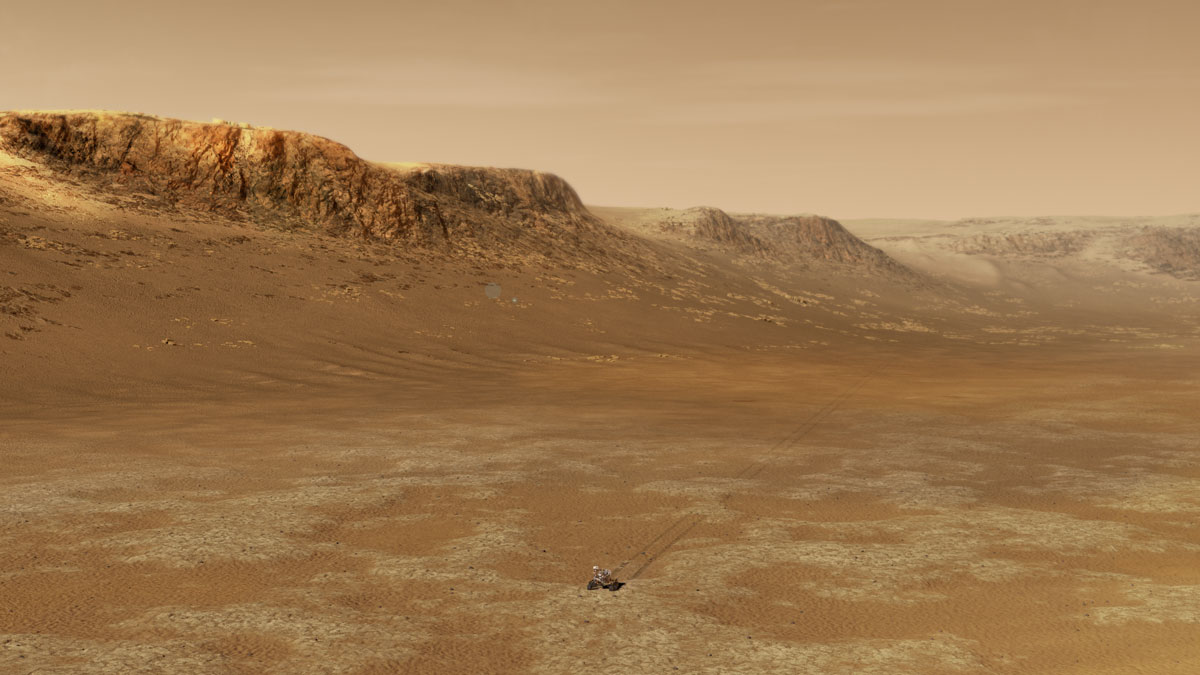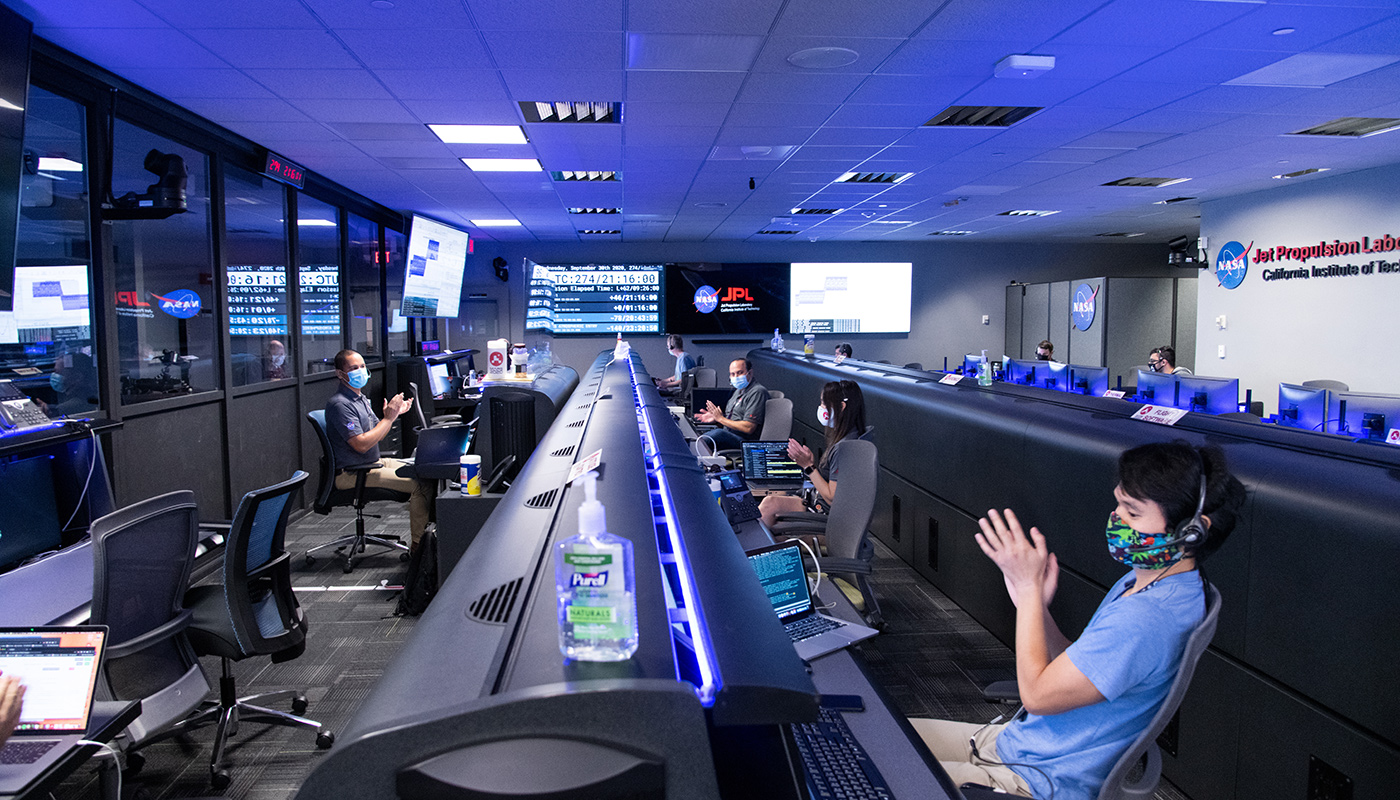NASA's Perseverance rover team will have to live on 'Mars time' after landing on the Red Planet

Once NASA's Perseverance rover lands on the Red Planet today (Feb. 18), its mission team will return to a time-honored tradition of planetary exploration — living on "Mars time."
Controllers at NASA's Jet Propulsion Laboratory (JPL) in Pasadena, California will temporarily shift to a 24-hour, 37-minute Martian "day" (or sol) to make the most out of Perseverance's first weeks on the Red Planet, deputy project manager Jennifer Trosper said in a news conference Tuesday (Feb. 16).
These weeks will be busy for the rover as it goes through several checkout activities before starting its first tentative rolls on the surface, so JPL and associated teams want to make the most of the excitement and adrenaline that will accompany the early phases of the mission, officials added.
You can watch the Mars landing live here and on Space.com's homepage, courtesy of NASA, beginning at 2:15 p.m. EST (1915 GMT). The landing is expected at 3:55 p.m. EST (2055 GMT).
Related: How to watch NASA's Perseverance rover land on Mars
Perseverance rover's Mars landing: Everything you need to know
Book of Mars: $22.99 at Magazines Direct
Within 148 pages, explore the mysteries of Mars. With the latest generation of rovers, landers and orbiters heading to the Red Planet, we're discovering even more of this world's secrets than ever before. Find out about its landscape and formation, discover the truth about water on Mars and the search for life, and explore the possibility that the fourth rock from the sun may one day be our next home.
Join our forums here to discuss the Perseverance Mars rover landing. What do you hope finds?
"There are about 350 people and some additional scientists who will be working on 'Mars time'. So right now they are adjusting their clocks," Trosper said during the news conference (available on JPL's YouTube channel).
"2 p.m. will be our start time and then that will adjust by 40 minutes every day, which — while it works — we only ask people to do this for three months," Trosper added. It has led to some fun activities in past missions. During the Curiosity rover landing of 2012, for example, one engineer put the kids and adults of his household alike on "Mars time" because it was summer and nobody was in school, she said.
Get the Space.com Newsletter
Breaking space news, the latest updates on rocket launches, skywatching events and more!
The Perseverance team will go through three cycles (37 Earth days) of Mars time before stepping back to a more normal Earth-based schedule, she added. "By the third [cycle], by the time we finish Mars time, they [controllers] are ready to be finished with Mars time. It's hard on your body. It's like being jet-lagged."
Related: Landing on Mars really messes with your work schedule

"Mars time" has been a constant for new NASA Mars missions for many years, although sometimes rescheduling creates unique challenges on Earth. The PBS series Nova once profiled a married couple working on the first few weeks of the Spirit and Opportunity water-seeking rover missions that landed in 2004. The couple not only had to balance their two work schedules, but they also were raising two children who were naturally more adapted to the 24-hour cycle of planet Earth — and were still at school, given both missions landed in January.
The Curiosity rover landing in 2012 saw engineers pondering alternative sleeping arrangements at work since about 20 to 50 people were working at any given time in Mission Control, which is based at JPL. (Many of the Curiosity console operators have been working from home since April 2020, however, due to new coronavirus pandemic quarantine protocols.)
"The [first] shifts are based on Mars time," Chuck Baker, mission planner for the cruise portion of Curiosity's trip from Earth to Mars, told Space.com in August 2012 around the time of the Curiosity landing. "You see a lot of people who wind up working weird hours. A lot of people have cots in their offices because getting sleep can get a little hairy."
By November 2012, when the first 90 sols of the mission were over, at least one Curiosity manager expressed reluctant relief at moving back to Earth's schedule. "People are glad to be going off Mars time," Richard Cook, the rover's deputy project manager, said at the time, while noting the team had made some innovations that shaved off planning time during the first heady weeks of the mission.
Another Curiosity team member pointed to another advantage of sharing the same crazy schedule for a while, which was a sense of teamwork.
"The phase that we're completing, working together at one location, has been incredibly valuable for team-building and getting to know each other under the pressure of daily timelines," said Joy Crisp, Curiosity's deputy project scientist at JPL, in a November 2012 statement. "We have reached the point where we can continue working together well without needing to have people living away from their homes."

NASA continues to bring more innovations to controllers' lives to make it as easy as possible to work at a high standard while living in perpetual jet lag. For example, a 2012 study suggested that naps, light boxes and strict schedules could help Red Planet scientists with living on Mars time for weeks at a time. Such insights may also be useful for future Mars-based crews living on site.
The study, which was conducted on controllers working on the 2008 Phoenix polar-landing mission at Mars, aimed to improve "sleep, alertness and performance," Steven W. Lockley, a neuroscientist at Brigham and Women's Hospital (BWH), said in a statement in 2012. Researchers gathered information from 19 Phoenix ground crew members who kept a sleep and work diary, tested their mood, memory and alertness on duty, and monitored their sleep patterns through an "actigraph" watch.
In 2018, controllers on a much smaller team than Curiosity's came up with a modified work schedule in the first few weeks of the InSight lander activities; the lander's goal is to gain information about rocky planet activity and evolution through studying Mars.
"Doing that [Mars time] shift every day is just too hard for human bodies," payload systems engineer Farah Alibay said at the time. "When the planets align and we're able to work during our daytime and Martian nighttime, then we work every day, and then when they don't, we work every other day. And there's plenty of science analysis to be done on the ground in between those days anyway, so it kind of works out."
Follow Elizabeth Howell on Twitter @howellspace. Follow us on Twitter @Spacedotcom and on Facebook.
Join our Space Forums to keep talking space on the latest missions, night sky and more! And if you have a news tip, correction or comment, let us know at: community@space.com.

Elizabeth Howell (she/her), Ph.D., was a staff writer in the spaceflight channel between 2022 and 2024 specializing in Canadian space news. She was contributing writer for Space.com for 10 years from 2012 to 2024. Elizabeth's reporting includes multiple exclusives with the White House, leading world coverage about a lost-and-found space tomato on the International Space Station, witnessing five human spaceflight launches on two continents, flying parabolic, working inside a spacesuit, and participating in a simulated Mars mission. Her latest book, "Why Am I Taller?" (ECW Press, 2022) is co-written with astronaut Dave Williams.










